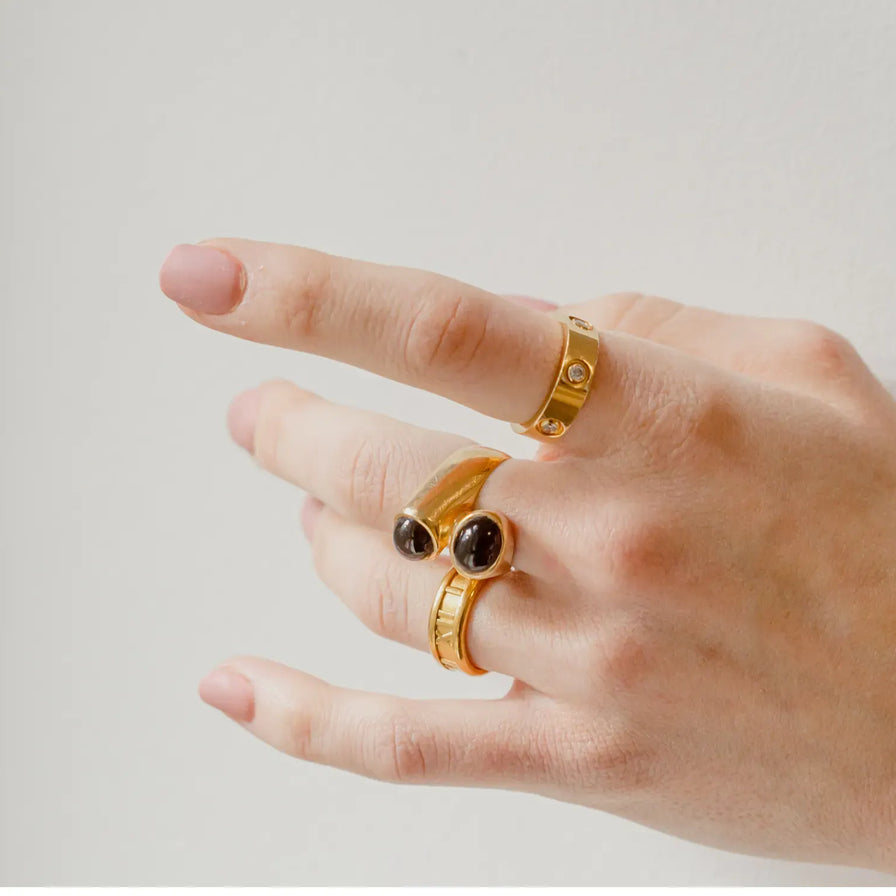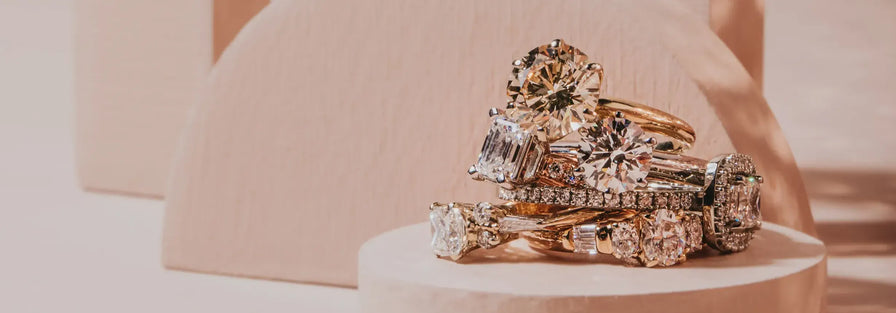It’s 2020! And what better time to rekindle our love for the Roaring Twenties, and our ongoing obsession with the timeless Art Decor style? There are a few key elements of Art Deco style that we can all picture: flapper girls, The Great Gatsby, geometric patterns and the iconic Chrysler Building in NYC. Each one with unique elements, but one cohesive & cool style.
The History of Art Deco


The term Art Deco took its name from the International Exposition of Modern Decorative and Industrial Arts, which took place in Paris in 1925. Art deco was a huge departure from the style that had come before it, known as Art Nouveau. Where Art Nouveau was all about soft edges, delicate filigree and beautifully detailed ornaments, Art Deco was much more straightforward with its designs. Taking a lot of its inspiration from the Cubism and Fauvism movements, art deco’s style was much more focused on rigid angular lines and geometric shapes. These innovations in jewellery were becoming much more possible with the advancement of technology and the ability to replicate designs fast and efficiently.
Inspiration from Overseas

Many people in the early 1920s were fascinated with the idea of the “Far East”, so naturally, the designs of many Art Deco pieces you would see at the time took influence from countries like Japan, China, India, and Egypt. The discovery of Tutankhamun’s tomb in 1922 just helped further this fascination. Many jewellery pieces had designs mimicking the likes of pyramids, scarabs and the eye of Horus. Carved gemstones also became quite commonplace in these jewellery pieces, which was a practice more commonly seen in countries like India at the time.



Jewellery for the Modern Woman
Another difference between Art Deco and the jewellery styles that came before it was the need for jewellery to have a more practical design. With women moving more and more into the workplace, the pieces of jewellery they chose to wear sometimes needed more than one function. Convertible jewellery became a highly sought-after thing, with pins that could also be worn as pendants, or necklaces and earrings having detachable parts so they could be worn from day to night. The use of platinum also became quite popular because of how durable the material was, it made it easier for pieces to be worn daily without the fear of them becoming warped or damaged. Platinum was also excellent for setting stones into, as they were at less risk of falling out being set in such a strong material. This proved to be essential with some of the mosaic-like designs that were created around this time. Stones were being set into jewellery in new and unique ways, like the invisible setting that was created by Van Cleef & Arpels. Stones were cut and set into interlocking grooves and rails, so no metal was visible in between the different gemstones.


There is no denying that there is something very timeless about Art Deco, and its influence continues to inspire designers to this day. If you are looking for a little bit of that 1920s flair in your life, I would highly recommend looking at our Art Deco collection on 100 Ways! You won’t be disappointed.


